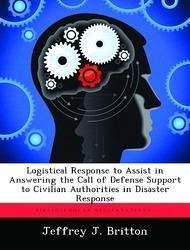During Hurricane Katrina, the levees in New Orleans failed turning a potential crisis into a catastrophic incident. The public began to question the responsibility and requirements of the United States (US) government in responding to the total devastation of New Orleans as the media continually showed the death and destruction. The public wanted answers on how the Federal government was going to provide quick and timely assistance in evacuation, search and rescue, and distribution of supplies (food and water). To answer these questions for John Q. Public, a logical response could have been the activation of a federal agency that will stop the horrors shown on an hourly basis. The agency with the responsibility to answer these questions is Department of Homeland Security (DHS) through the direction of Federal Emergency Management Agency (FEMA). The FEMA design, as a coordinating agency with the ability to task and synchronize the other federal agencies, was not able to respond to the widespread devastation. The President decides once again to call on the Department of Defense (DOD) to answer the call to assist in disaster response. This study will specifically focus on the logistical responses necessary to react to a catastrophic incident. An examination of the governmental laws and policies will provide the basis of the legal requirements in supporting the Defense of Civilian Authorities. These laws and policies will lay out the constraints that the President and DOD must work though in order to provide the type of response that the public was looking for in Hurricane Katrina. This paper conducted an examination of the National Response Plan (NRP) to determine which areas would fall under the purview of DOD. Focus of the investigation into the NRP also concentrated on the abilities of logistic units that can resolve some of the specified and improvised tasks for DOD. The end-result was the creation of an appendix that allows one to examine each of the Emergency Su
Bitte wählen Sie Ihr Anliegen aus.
Rechnungen
Retourenschein anfordern
Bestellstatus
Storno









